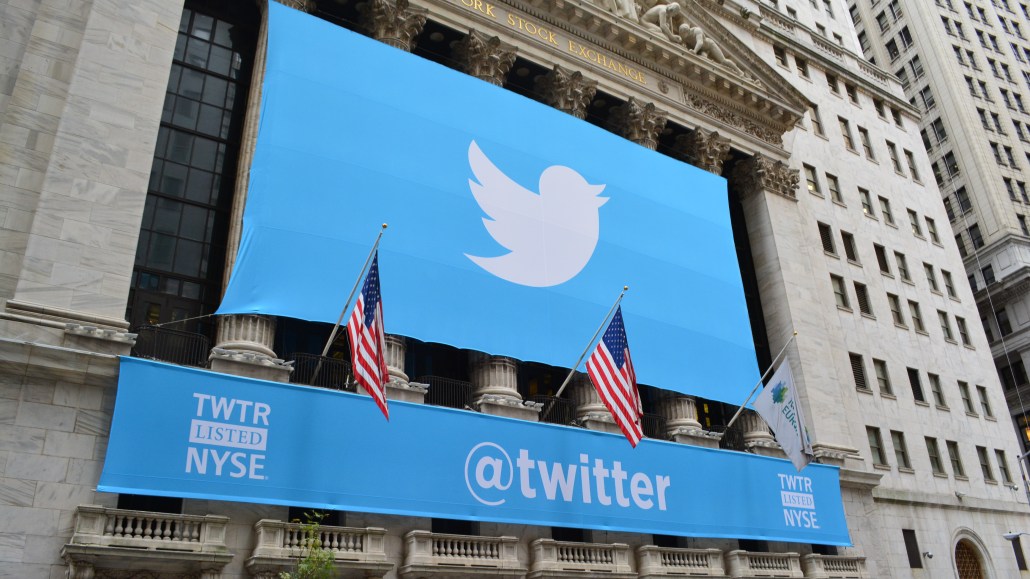
As director of brand strategy at Twitter, Ross Hoffman is tasked with helping brands run campaigns that go beyond simply sending out promoted tweets. Brands come to him when they want to make a major media push, launch a Black Friday campaign or undertake a holistic rebrand of the company.
These days, part of Hoffman’s job is to assure brands about Twitter remains valuable even amid questions about slowing user growth. Hoffman spoke with Digiday about how Twitter’s recent design changes have affected user behavior and how it’s hoping to one day take advantage of other sites embedding tweets.
Twitter has rolled out a number of new features in the past year. How have they changed user behavior?
People are consuming tweets as media a lot more now that we have photos that are pre-expanded in the platform. On the trends side, we’ve seen interesting things. We’ve been seeing for some time certain memes that are now mainstream and baking them into campaigns.
For example, we worked with three Unilever brands during MTV’s Video Music Awards. With TRESemmé, they were doing hairstyle tutorials. With Degree Women, they were doing breakdancing GIFs that they were pushing out in real time as well as user dance videos.
Check out @KatGraham‘s #VMA-ready red carpet look by TRES. Get the look now. #AmpUpYourStyle pic.twitter.com/jQwLsy7CV2
Ad rendering preventing in staging
Ad position: web_incontent_pos1
— TRESemmé (@TRESemme) August 24, 2014
Couldn’t have ended this #VMA #DANCEBREAK eve with a better #DOMORE moment. #QueenBey reigns supreme, always. https://t.co/AsY48cEQcd
— Degree Women (@DegreeWomen) August 25, 2014
Twitter has been experimenting with serving users tweets from accounts those users don’t follow. Should brands be worried that there’s at any point going to be an algorithm that stands between them and their audiences?
I don’t think so. That’s such a core differentiator between Twitter and other platforms. That open, public exchange of information where you can see amazing things that are happening all over the world, whether it’s the world that you curated or the creative world. We’re real-time, we’re conversational, we’re distributed and we’re public. The public aspect is the big one to think about. If we change that, that would change our position in the marketplace.
Ad position: web_incontent_pos2
CEO Dick Costolo always talks about how Twitter’s influence extends beyond its own platform, but that’s not necessarily true for its brand partners. How does Twitter plan to change that?
With syndication, MoPub is the first foray into that. The interesting thing is the ubiquity of tweets online. It’s an incredible pro that’s already there versus having to go out and convince them to put tweets on their sites. Marketers ask all the time, “How are we going to be able to reach those people?” We haven’t answered that yet, but clearly there’s demand there.
Image via
More in Media

NewFronts Briefing: Samsung, Condé Nast, Roku focus presentations on new ad formats and category-specific inventory
Day two of IAB’s NewFronts featured presentations from Samsung, Condé Nast and Roku, highlighting new partnerships, ad formats and inventory, as well as new AI capabilities.

The Athletic to raise ad prices as it paces to hit 3 million newsletter subscribers
The New York Times’ sports site The Athletic is about to hit 3 million total newsletter subscribers. It plans to raise ad prices as as a result of this nearly 20% year over year increase.

NewFronts Briefing: Google, Vizio and news publishers pitch marketers with new ad offerings and range of content categories
Day one of the 2024 IAB NewFronts featured presentations from Google and Vizio, as well as a spotlight on news publishers.
Ad position: web_bfu